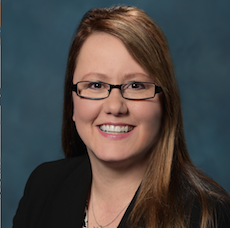
Reuse or share glucose monitoring and insulin administration devices only under certain conditions, make sure all staff members are properly trained, and clean equipment and hands between procedures. Those are some of the infection prevention tips that Abimbola Ogundimu, Dr.PH., RN, CIC, shared during a recent webinar offered by the National Center for Assisted Living and the American Assisted Living Nurses Association.
Ogundimu, an infection preventionist and health scientist in the Centers for Disease Control and Prevention’s Division of Healthcare Quality Promotion, said that infection prevention increasingly is relevant in assisted living communities as more residents have complex medical needs, and injection safety practices are central to infection prevention efforts.
“Injection safety inherently prevents the transmission of infectious diseases, either between residents, between residents and providers or between providers and residents,” she said.
And because, as Ogundimu noted, effective infection prevention also can help reduce hospital readmissions and emergency department visits, assisted living communities that are moving to a hybrid or medical model and are successful in their injection safety efforts may be more attractive to potential partners in the healthcare system.
Infectious disease outbreaks, particularly of hepatitis B, have been on the rise in assisted living since 2004, Ogundimu said, and especially since 2010. “The lessons that we’ve learned from recent outbreaks highlight opportunities in infection control infrastructure, particularly for assisted living facilities,” she said.
Based on the CDC’s experience, Ogundimu shared these steps that communities can take to prevent the spread of infectious disease:
- Develop a written infection control plan that covers hand hygiene, glove use and safe injection practices.
- Allow only trained staff — and only those permitted by law — to perform or assist in blood glucose monitoring activities and insulin administration.
- Develop a surveillance program based on your residents’ risks. Report any newly acquired bloodborne infection in a resident or staff member to local health authorities, and ensure that you are meeting state and federal reporting requirements, too.
- Train all relevant staff members on infection control and hand hygiene practices. Staff should be trained when hired and at least once annually. Periodically observe staff members who perform or assist with procedures such as blood glucose monitoring and insulin administration.
- Hire dedicated, trained infection prevention personnel to review infection prevention policies, plans and practices, including those related to people and companies that provide services (including environmental services) on a contracted basis. These individuals also can ensure that education and training occurs.
- Do not use reusable fingerstick devices unless each device is dedicated to a particular resident. Clean and disinfect the devices between each use.
- Whenever possible, assign blood glucose monitoring equipment for use with one resident. If blood glucose meters must be shared among multiple residents, then clean and disinfect them after every use.
- Do not use blood glucose meters that do not come with instructions on how to clean and disinfect them.
- Wear gloves, and change them between each procedure. Perform hand hygiene between each procedure and before you put on a new set of gloves. If your hands are not visibly soiled, then an alcohol-based hand wash is sufficient. Otherwise, use soap and water.
- Do not use the same syringe to access medication vials or intravenous fluid bags.
- If using insulin pens to administer insulin, each pen should be assigned to a particular resident and labeled appropriately.
- If using multi-dose insulin vials to administer insulin, try to dedicate each vial to a particular resident. If a vial is used for multiple residents, then prepare and store it in a dedicated medication preparation area that is outside of the resident care environment where it may come in contact with contaminated equipment.
- Every time you enter an insulin vial, do so with a new syringe and needle or a new cannula. Never use a particular needle, syringe or cannula on more than one resident, and dispose of needles and syringes in an approved and labeled sharps container immediately after they are used. Change the sharps container when it is half to three-fourths full, depending on the instructions on the container.
- Do not share IV administration sets between multiple residents, and dispose of them appropriately after use.
- Use needles with safety devices wherever possible. Do not recap, break or bend needles.
- Do not carry medications or gloves, masks or other supplies in your pocket.
- Keep unused supplies and medications in a clean area away from areas that potentially could be contaminated.
- Track blood glucose monitoring and insulin administration supplies to ensure that they are being used appropriately. Also ensure that adequate supplies are on hand for hand hygiene and personal protection (gowns, gloves, masks).
- Offer hepatitis B vaccination to staff members.
Although the CDC does not maintain a position on licensed nurses prefilling insulin from multi-dose vials for administration at a later date, Ogundimu personally advises against the practice because of the potentially lethal ramifications that could ensue from unlabeled or mislabeled syringes. “It’s best practice to fill the syringe just immediately before injecting the medication versus drawing it up two hours, or even 30 minutes early, because there is always that human factor that has to be taken into consideration,” she said.
Additional information on safe injection practices, Ogundimu said, can be found online at the One and Only campaign website; the CDC web page for assisted living communities, skilled nursing facilities and nursing homes; and the CDC injection safety website.
“There is a growing need to utilize state and national resources to increase awareness and promote education to all staff,” she said.
Lois A. Bowers is senior editor of McKnight’s Senior Living. Contact her at [email protected]. Follow her on Twitter @Lois_Bowers.



